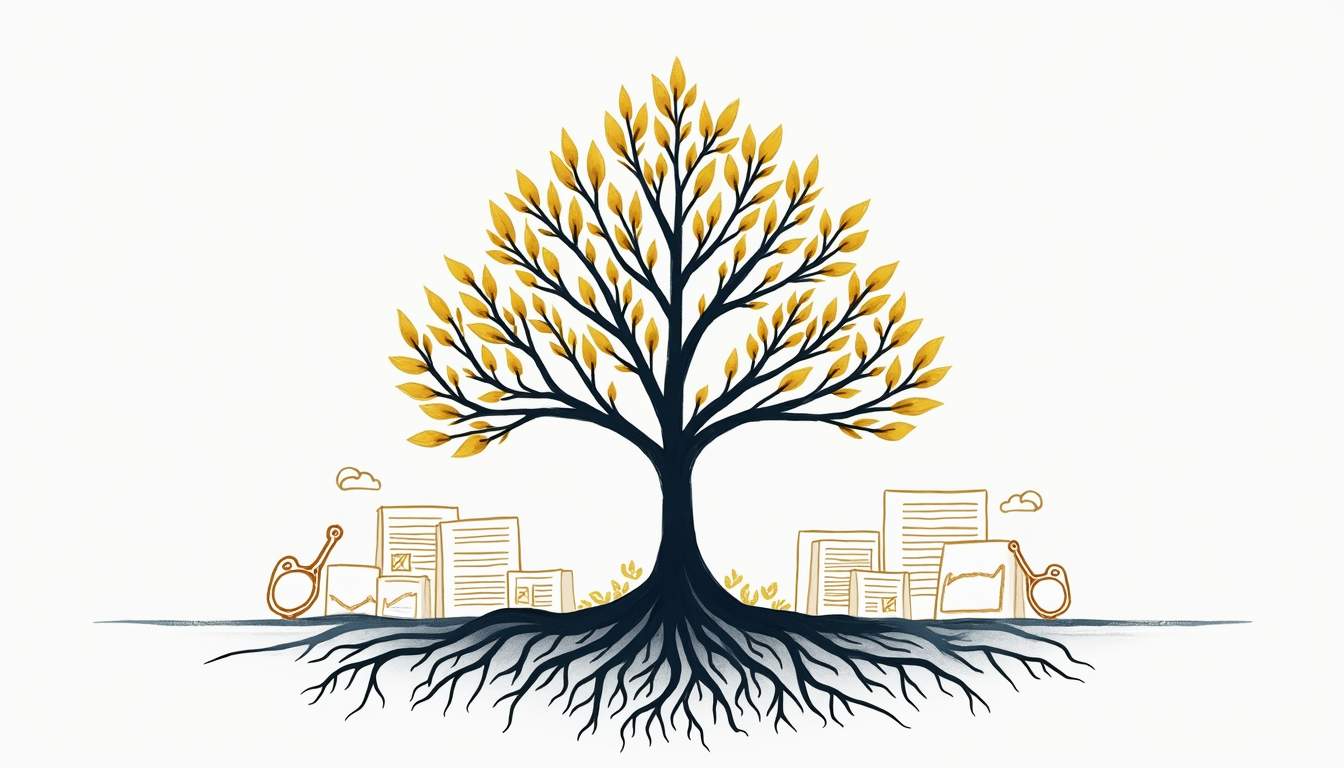
In today’s fast-paced and ever-evolving financial landscape, the quest for growth often goes hand in hand with the necessity of protecting one’s assets. Investors, entrepreneurs, and business owners face the challenge of balancing the pursuit of opportunities with the need to safeguard their existing resources. This article explores effective strategies for asset protection while simultaneously seeking growth, ensuring a comprehensive approach to financial health.
Understanding Asset Protection
Asset protection refers to the legal methods and strategies employed to safeguard one’s wealth from potential risks, including lawsuits, creditors, and unforeseen financial downturns. It is essential for individuals and businesses alike to understand the importance of protecting their assets as they navigate growth opportunities.

The Importance of Asset Protection
In a world where litigation is common and economic uncertainties abound, asset protection serves as a crucial safety net. By implementing protective measures, individuals can shield their wealth from unexpected claims and liabilities. This not only preserves financial stability but also provides peace of mind, allowing for a more focused approach to growth.
Moreover, asset protection can enhance credibility and trustworthiness in the eyes of investors and partners. When stakeholders see that a business has taken steps to protect its assets, they are more likely to engage and invest, recognizing the organization’s commitment to long-term sustainability. This proactive approach can also foster stronger relationships with clients, as they feel more secure knowing that their interests are safeguarded within a well-structured entity. To learn more about how asset protection fits into a broader financial strategy, visit Mercer Wealth Management website, where simplified and personalized financial guidance is offered through a holistic, collaborative process.
Common Asset Protection Strategies
There are several strategies that individuals and businesses can employ to protect their assets effectively. These include forming legal entities such as limited liability companies (LLCs) or corporations, which can provide a shield against personal liability. Additionally, utilizing trusts can help in safeguarding assets from creditors while also offering tax benefits. Trusts can be particularly advantageous for estate planning, allowing for the smooth transfer of wealth to heirs while minimizing exposure to estate taxes.
Insurance is another vital component of asset protection. Comprehensive coverage can mitigate risks associated with property damage, liability claims, and other unforeseen events. Regularly reviewing and updating insurance policies ensures that individuals and businesses remain adequately protected as their circumstances evolve. Furthermore, specialized insurance products, such as umbrella policies, can provide an extra layer of protection against large claims that exceed standard coverage limits, ensuring that individuals are not left vulnerable in the face of significant financial threats.
In addition to these strategies, diversifying investments can also play a key role in asset protection. By spreading wealth across various asset classes—such as real estate, stocks, and bonds—individuals can reduce the risk of a total loss due to market fluctuations or economic downturns. This diversification not only helps in safeguarding assets but also positions individuals to capitalize on different growth opportunities as they arise, creating a more resilient financial portfolio.
Identifying Growth Opportunities
While protecting assets is crucial, recognizing and seizing growth opportunities is equally important. Growth can take many forms, including expanding into new markets, launching innovative products, or enhancing operational efficiencies. Understanding how to identify and assess these opportunities is key to achieving sustainable growth.

Market Research and Analysis
Conducting thorough market research is the first step in identifying potential growth opportunities. This involves analyzing industry trends, consumer behavior, and competitive landscapes. By gaining insights into market dynamics, businesses can pinpoint areas ripe for expansion or innovation.
Utilizing data analytics tools can significantly enhance the research process. These tools provide valuable information regarding customer preferences, emerging trends, and potential gaps in the market. By leveraging this data, organizations can make informed decisions that align with their growth objectives. For instance, predictive analytics can help forecast future buying behaviors, allowing companies to tailor their offerings accordingly. Additionally, sentiment analysis of social media can reveal consumer attitudes toward brands and products, providing a deeper understanding of market positioning.
Networking and Collaboration
Networking plays a pivotal role in uncovering growth opportunities. Establishing connections with industry peers, potential partners, and mentors can lead to collaborations that drive innovation and expansion. Attending industry conferences, joining professional associations, and participating in online forums are effective ways to build a robust network.
Collaboration can also manifest through strategic partnerships, where businesses combine resources and expertise to explore new markets or develop new products. These alliances can accelerate growth while sharing the associated risks, making them a win-win for all parties involved. Furthermore, engaging in cross-industry collaborations can lead to unexpected innovations, as diverse perspectives often spark creative solutions. For example, a technology firm partnering with a healthcare provider can lead to the development of groundbreaking health tech solutions that neither could achieve alone. Such synergies not only enhance product offerings but also open doors to new customer segments, ultimately driving sustained growth.
Balancing Growth and Protection
While the pursuit of growth is essential, it should not come at the expense of asset protection. Striking a balance between these two objectives is crucial for long-term success. Here are some strategies to ensure that growth initiatives do not compromise asset safety.
Risk Assessment and Management
Before embarking on any growth initiative, conducting a thorough risk assessment is vital. This involves identifying potential risks associated with the opportunity, including financial, operational, and reputational risks. By understanding these risks, businesses can develop strategies to mitigate them effectively.
Implementing a risk management framework can help organizations navigate uncertainties while pursuing growth. This framework should include regular monitoring of risks, contingency planning, and establishing clear protocols for addressing potential issues as they arise. Furthermore, engaging stakeholders in the risk assessment process can provide diverse perspectives and enhance the overall understanding of potential challenges, leading to more robust risk mitigation strategies.
Gradual Expansion
Rather than pursuing aggressive growth strategies that may jeopardize asset protection, consider a more gradual approach. Incremental growth allows businesses to test new markets or products without overextending themselves. This strategy enables organizations to assess the viability of their initiatives while minimizing risks.
Additionally, gradual expansion allows for continuous evaluation and adjustment of strategies based on real-time feedback and performance metrics. This adaptability ensures that businesses remain agile and responsive to changing market conditions. By fostering a culture of learning and experimentation, companies can leverage insights gained during the gradual expansion process to refine their offerings and better align with customer needs, ultimately enhancing both growth and protection.
Moreover, gradual expansion can also facilitate stronger relationships with local stakeholders, including customers, suppliers, and regulatory bodies. By taking the time to establish a presence in new markets, businesses can build trust and credibility, which are essential for long-term sustainability. This approach not only safeguards assets but also creates a solid foundation for future growth opportunities, allowing organizations to thrive in an increasingly competitive landscape.
Leveraging Technology for Growth and Protection
In the digital age, technology plays a significant role in both growth and asset protection. Embracing technological advancements can streamline operations, enhance customer experiences, and improve overall efficiency. Here’s how technology can be leveraged for both objectives.

Automation and Efficiency
Implementing automation tools can significantly enhance operational efficiency, allowing businesses to focus on growth initiatives. By automating repetitive tasks, organizations can allocate resources toward strategic planning and innovation. This not only drives growth but also reduces the likelihood of errors that could compromise asset safety.
Moreover, technology can facilitate better data management and analysis. Utilizing cloud-based solutions and data analytics platforms enables businesses to make informed decisions based on real-time insights, ultimately supporting both growth and protection strategies.
Cybersecurity Measures
As businesses increasingly rely on technology, the importance of cybersecurity cannot be overstated. Protecting digital assets is a critical component of overall asset protection. Implementing robust cybersecurity measures, such as firewalls, encryption, and regular security audits, safeguards sensitive information from cyber threats.
Investing in employee training on cybersecurity best practices is equally important. Ensuring that all staff members are aware of potential risks and know how to respond can significantly reduce the likelihood of breaches that could jeopardize both growth and asset safety.
Legal Considerations in Asset Protection
Understanding the legal landscape is essential for effective asset protection. Various laws and regulations govern how assets can be protected, and navigating this complex terrain requires careful consideration.
Consulting with Legal Experts
Engaging with legal professionals who specialize in asset protection can provide invaluable insights. These experts can help individuals and businesses understand their rights, obligations, and the most effective strategies for safeguarding assets. Legal counsel can also assist in drafting necessary documents, such as trusts or operating agreements, to ensure compliance with applicable laws.
Additionally, staying informed about changes in legislation is crucial. Laws regarding asset protection can vary significantly by jurisdiction, and being aware of these variations can help individuals and businesses make informed decisions.
Estate Planning
Estate planning is a vital aspect of asset protection that often goes overlooked. Properly structuring an estate can ensure that assets are distributed according to an individual’s wishes while minimizing tax liabilities and protecting against creditors. Establishing wills, trusts, and powers of attorney are essential components of a comprehensive estate plan.
Regularly reviewing and updating estate plans is equally important, especially following significant life events such as marriage, divorce, or the birth of a child. This proactive approach ensures that asset protection measures remain relevant and effective over time.
Conclusion
Protecting assets while pursuing growth opportunities is a delicate balance that requires strategic planning and informed decision-making. By understanding the importance of asset protection, identifying growth opportunities, and leveraging technology, individuals and businesses can create a comprehensive approach to financial health.
Implementing effective risk management strategies, gradual expansion, and legal considerations further enhances the ability to protect assets while achieving growth. In a world where change is constant, staying adaptable and proactive is essential for long-term success.
Ultimately, the journey toward growth should not compromise the safety of one’s assets. By prioritizing both objectives, individuals and businesses can thrive in an ever-evolving financial landscape, ensuring a secure and prosperous future.